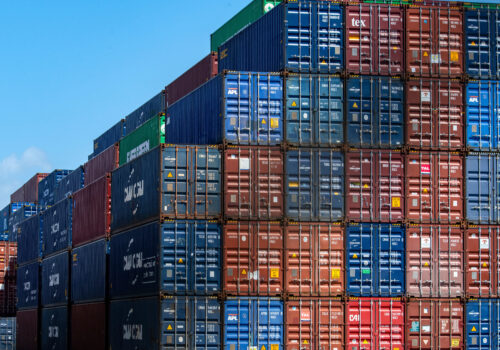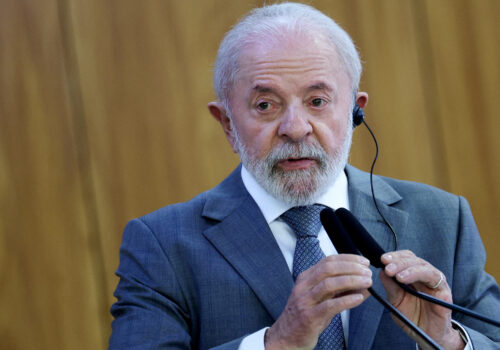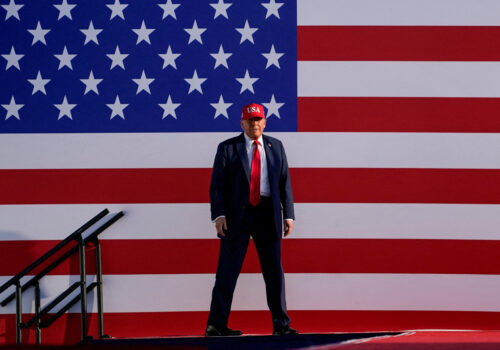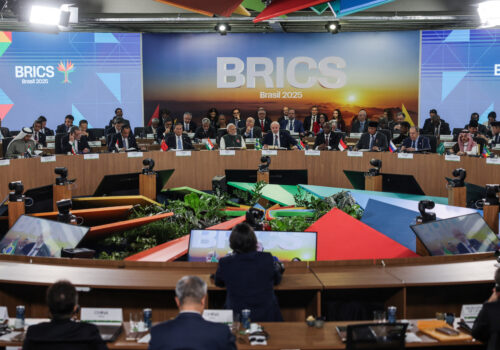The numbers that define the US-Brazil trade partnership
It’s been a rocky two weeks for US-Brazil trade diplomacy. On July 9, US President Donald Trump announced a whopping 50 percent tariff on Brazil, which is slated to take effect on August 1. If this measure moves ahead, then it will be a significant increase from the 10 percent baseline tariff announced in early April on Trump’s “Liberation Day.” Among the countries that received special letters last week from the White House, Brazil stands out as the only one with which the United States has had a consistent trade surplus in recent years.
Then, this week, the Office of the United States Trade Representative initiated an investigation of Brazil under Section 301 of the Trade Act of 1974. This investigation seeks to determine whether the Brazilian government acted in an unreasonable or discriminatory way against commerce with the United States.
A prolonged trade skirmish between Washington and Brasília could result in far-reaching consequences. US threats to impose steep tariffs could, for example, lead Brazil to believe that the United States is an unreliable trading partner. Brazilian leaders could then seek to diversify their country’s export markets toward other trading partners, including China. This, in turn, could give Beijing more influence in the region, potentially to the detriment of the United States.
To get a fuller sense of the stakes, it is useful to take stock of where the US-Brazil economic relationship stands at present, before the August 1 tariff deadline.
Looking at US trade in goods data, the United States has a trade surplus with Brazil. But even more importantly, Brazil has the highest US trade surplus among emerging economies, as evidenced by the 2024 trade data among Group of Twenty (G20) economies.
In May, Brazilian Finance Minister Fernando Haddad met with US Treasury Secretary Scott Bessent in Los Angeles. Although the meeting was private, Haddad later told reporters that one of the main objectives in his engagement with the US government was to negotiate tariffs based on the premise that the United States has historically run trade surpluses with Brazil, and with South America more broadly. Since Trump’s announcement last week, Brazilian President Luiz Inácio Lula da Silva, too, has underscored the US trade surplus in his public comments.
But what lies behind these numbers? A closer look at the structure of bilateral trade reveals that the US trade surplus is concentrated in a few high-value sectors. These are transportation equipment, machinery, electronics, and chemicals, reflecting the United States’ comparative strength in capital and technology-intensive industries. For example, Brazil is a significant buyer of US goods, particularly fertilizers, which account for nearly 20 percent of total US fertilizer exports. These US exports—ranging from aircraft and automotive parts to sophisticated industrial machinery and specialized chemical products—underscore the United States’ role as a supplier of advanced manufactured goods to the Brazilian market.
By contrast, Brazilian exports to the United States are dominated by commodities and semi-processed goods, such as iron ore, oil, and agricultural products. For example, pulp of wood and other fibrous cellulosic materials make up almost 40 percent of US imports in this category. This is followed in the list by coffee, leather, iron and steel, and sugar. This dynamic highlights not only the different industrial profiles of the two economies but also Brazil’s dependence on US high-tech inputs for its own production and infrastructure needs.
One of the main irritants for the United States in the bilateral relationship has been Brazil’s tariffs, particularly in key sectors such as the ethanol fuel trade. Brazil has long maintained higher tariffs than the United States for all products and all countries. Simple averages show that Brazil’s import duties exceed those of the United States, especially on nonagricultural goods. Even when adjusted for trade flows, Brazil’s tariffs remain higher overall—though the United States protects some agricultural imports more heavily.
On ethanol, Brazil has consistently imposed steep tariffs, nearly six times higher than US levels, to protect the domestic market of sugar cane–based ethanol. These tariffs could be an area for negotiation between Brazil and the United States toward trade practices that are seen as more mutually beneficial.
However, unlike the United States, Brazil can’t easily lower its tariffs unilaterally due to its commitments under the Mercosur customs union, which limits its flexibility on trade policy. At the same time, Brazil’s high tariffs are a structural dynamic faced by most non-Mercosur trade partners, and they are not necessarily discriminatory against US products, as Brazil imposes a similar rate to all foreign products.
Finally, if Brazil loses access to the US market because of high tariffs, Brazil may look to increase its trade with countries such as China. Brazil’s exports are predominantly commodities, which could be redirected toward other trade partners if Brazilian producers struggle to compete in the US market because of high tariffs. Brazilian trade with China has already risen in recent years. And given the unreliability of the US trade partnership, Brazil would likely shift where it gets its imports from, too, potentially to the detriment of US exporters.
Valentina Sader is a deputy director at the Atlantic Council’s Adrienne Arsht Latin America Center.
Ignacio Albe is a program assistant at the Adrienne Arsht Latin America Center.
Further reading
Thu, Jul 10, 2025
Trump is threatening Brazil with a 50 percent tariff. How will Lula respond?
New Atlanticist By Ricardo Sennes, Valentina Sader
The large tariff on Brazilian imports to the United States is set to take effect August 1, unless the US president and his counterpart in Brasília can strike a deal.
Tue, Jul 8, 2025
April, July, now August: Our expert guide to Trump’s latest tariff moves
New Atlanticist By
“Liberation Day” was nearly ninety days ago, and now the deadline for many nations to negotiate a trade deal and avoid US tariffs is extended to next month. Atlantic Council experts explain what’s behind the moving calendar.
Tue, Jul 8, 2025
What really came out of this year’s BRICS summit?
New Atlanticist By Valentina Sader, Ignacio Albe
Russia’s and China’s presidents were absent. But there were nonetheless several notable outcomes from the recent BRICS summit in Brazil.
Image: A drone view shows a ship and containers at the Port of Santos, in Santos, Brazil April 3, 2025. REUTERS/Amanda Perobelli/File Photo




